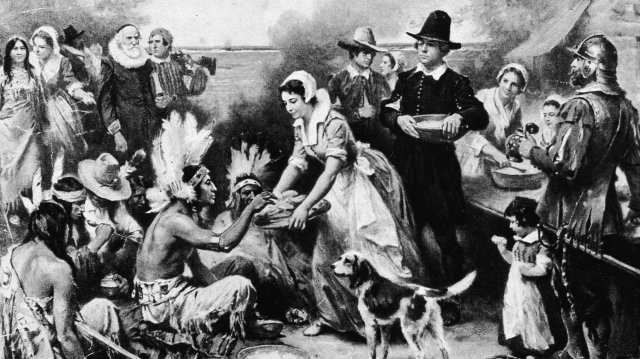

The English saw this event as divine justice against the Pequot “ wrought so wonderfully” by God, and the governor of the Massachusetts Bay Colony declared a day of thanksgiving in response. The several hundred Pequot men, women and children inside the fortified village were all killed or burned alive. In 1637, during the Pequot War, a contingent of English soldiers and their Native allies surrounded and burned a Pequot village near present-day Mystic, Conn.

While not the inspiration for the Thanksgiving holiday we now celebrate, one such day of thanksgiving was announced in the Massachusetts Bay Colony in 1637 to celebrate the event now known as the Mystic Massacre. Thanksgiving celebrations were regular occurrences in colonial North America, with some commemorating the sort of colonial violence that would become commonplace. The English and the local tribes were highly suspicious of one another, and violence between them would become increasingly common in subsequent years. In contrast, fewer than 50 Pilgrims had survived that first winter. After all, 90 Wampanoag warriors showed up at Plymouth, likely unannounced. The feast was almost certainly a tense political moment, not a carefree celebration of cross-cultural understanding. While the legend describes how two cultures came together peacefully to enjoy a meal, the reality was likely rather different.

This year marks the 400th anniversary of that feast, which would later be considered the mythical origin of the Thanksgiving holiday we celebrate today.īut we must place the “First Thanksgiving” into its proper historical context: one of brutal violence under colonialism. Sometime that autumn, the colonists enjoyed a three-day feast with the Wampanoag chief Massasoit (also known as Ousamequin) and 90 of his men who came to Plymouth. This was largely thanks to help from the neighboring Wampanoag people and particularly the now-famous Tisquantum, or Squanto. Yet by the autumn of 1621-exactly 400 years ago-their situation had improved. The Pilgrims of Plymouth Colony struggled greatly that first winter, with half of the Mayflower’s passengers dying of tuberculosis and pneumonia before spring arrived. It had been a harrowing two month-long voyage from England on the Mayflower, but their troubles were far from over. When the Pilgrims landed on the shores of what is now Cape Cod in late November of 1620, they “ fell upon their knees and blessed the God of Heaven” for delivering them to a safe harbor.


 0 kommentar(er)
0 kommentar(er)
